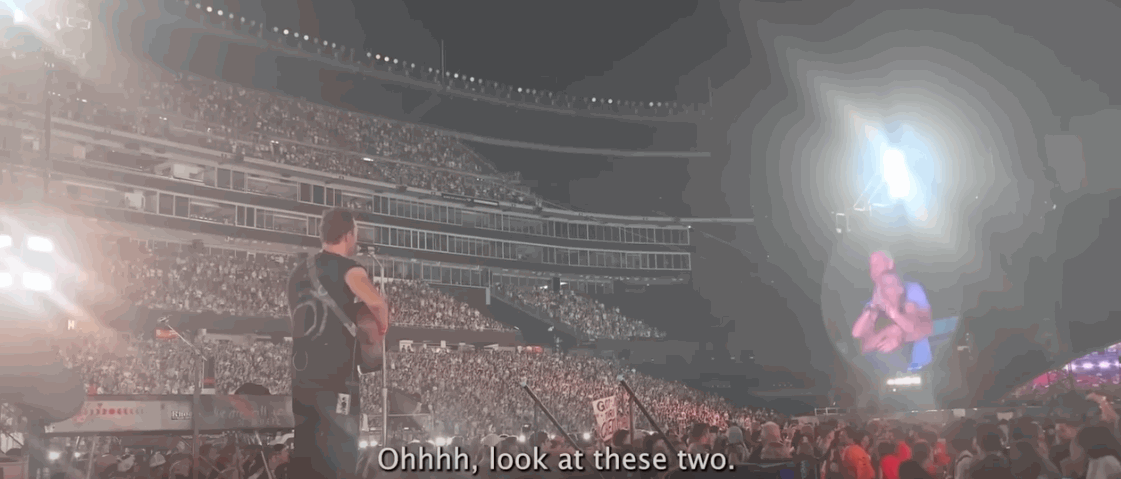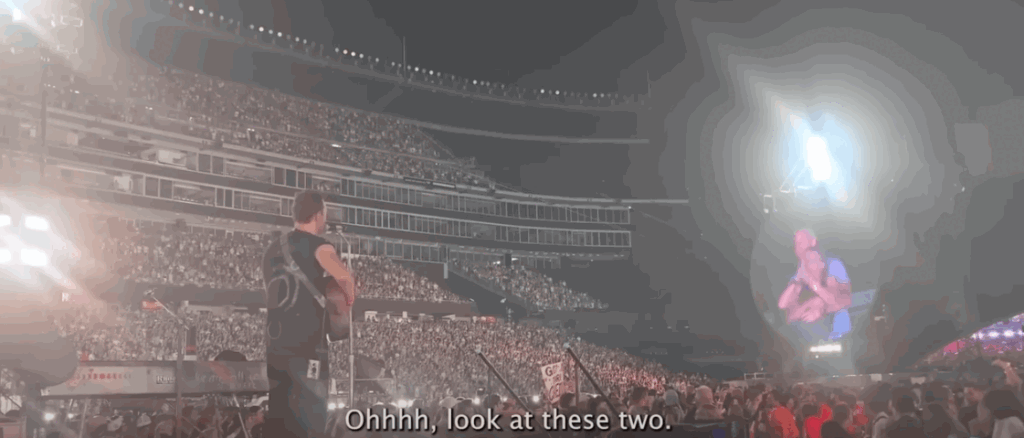Those who know me know my career #1 was in brand marketing, where I worked for the now defuct FUNimation Entertainment. That early career planted the seeds for my knowledge about how people risk impacts an organizations greatest public asset, its brand and reputation. Those who know me a little bit better also know I’m a passionate metal head. When I’m not educating CEOs, you can find me at a rock concert or festival. So, of course, the death of Ozzy The Prince of Darkness hit me hard yesterday.
One of the reasons I admire Ozzy so much is he spent his time on this earth proving that authentic brand management can transform any scandal into competitive advantage. While most brands panic at the first sign of controversy, Ozzy Osbourne built a legendary career by embracing chaos, owning mistakes, and turning crises into cultural currency. His journey from Black Sabbath’s fired frontman to beloved family patriarch offers modern marketers a masterclass in authentic crisis navigation that’s more relevant than ever in our polarized, social media-driven world.
Behind every legendary Ozzy moment was Sharon Osbourne’s strategic genius—a woman who understood that crisis could become currency if handled with authenticity, patience, and long-term vision. Their approach influenced not just music industry practices but broader celebrity brand management, proving that genuine responses consistently outperform manufactured messaging. From the infamous bat-biting incident to reality TV transformation, the Osbourne crisis management model offers actionable insights for any brand willing to prioritize authenticity over perfection.
The accidental genius of turning scandals into brand stories
March 27, 1981—CBS Records boardroom, Los Angeles. Ozzy Osbourne, heavily intoxicated on brandy, grew bored during a sales convention meeting promoting his debut solo album. In front of shocked executives, he bit the heads off two white doves and spit them onto the conference table. CBS immediately threw him out, declaring he’d “never work for them again.”
Most artists would have panicked. Sharon Osbourne saw opportunity.
“Sharon knew immediately that she had an opportunity here,” bassist Rudy Sarzo witnessed firsthand. “She contacted our publicist and she spun it. She spun the ‘myth’ that it is today. I saw it happen, right in front of my eyes: her getting on the phone and saying, ‘Hey, listen, this happened. Let’s make a story out of this.'”
The result? Album sales surged immediately. The dove incident didn’t damage Ozzy’s career—it launched his solo success and established his “Prince of Darkness” persona. Sharon had discovered something most brands still struggle to understand: authentic controversy, properly managed, creates deeper connection than safe messaging ever could.
So perhaps the interim Astronomer CEO was right, terrible how it came about – but Astronomer is now a household name IF they identify the Critical Opportunity.
Patterns = Brand Pillars
This pattern would repeat throughout Ozzy’s career, most famously with the January 20, 1982 bat-biting incident in Des Moines, Iowa. When 17-year-old fan Mark Neal threw a dead bat onto the stage, Ozzy mistook it for a rubber prop and bit its head off, requiring three weeks of nightly rabies shots. Rather than attempting damage control, Sharon again transformed potential disaster into legendary brand mythology. Today, bat imagery generates millions in merchandise revenue and remains Ozzy’s most recognizable symbol.
Modern Brand Risk Lesson: Your brand’s most memorable moments often emerge from unplanned authenticity, not carefully crafted campaigns. The key is having systems in place to recognize opportunity within crisis and respond strategically rather than defensively.
Strategic authenticity beats manufactured perfection every time
1982 was the first year I became aware of Ozzy as an artist. Why? He peed on a monument in my hometown of San Antonio, Texas. The February 19, 1982 Alamo incident perfectly demonstrates how authentic long-term reputation building outperforms immediate damage control. While wearing Sharon’s green dress during a drinking binge, Ozzy urinated on the Alamo Cenotaph—the 60-foot memorial honoring fallen defenders. He was arrested for public intoxication and banned from all San Antonio city-owned facilities for 10 years.
Sharon’s strategy was revolutionary for its patience. Instead of immediate defensive messaging, she allowed the initial scandal to develop naturally. Then, she orchestrated a systematic redemption campaign: a formal 1992 public apology to Mayor Nelson Wolff, a $10,000 donation to the Daughters of the Republic of Texas, and ultimately a 2015 return with son Jack for a History Channel documentary demonstrating genuine education about the site’s significance.
The results speak to the power of authentic redemption. By 2025, even the Alamo acknowledged “Ozzy Osbourne’s journey from regret to reconciliation.” What could have been career-ending controversy became a masterclass in genuine accountability and transformation.
This approach proved crucial again during Ozzy’s darkest moment—the September 2, 1989 incident when, during a drug and alcohol blackout, he attempted to strangle Sharon. Rather than whitewashing the event, both parties acknowledged its severity while contextualizing it within addiction narrative. Sharon dropped charges after Ozzy completed court-mandated six-month rehabilitation, demonstrating that strength comes from requiring change, not hiding problems.
Modern Brand Risk Lesson: Authentic redemption requires time, consistent action, and genuine transformation. Brands that acknowledge mistakes honestly and demonstrate real change through sustained effort build deeper trust than those that never face controversy at all.
Building community that defends your brand during crises
The “Suicide Solution” lawsuits of the mid-1980s revealed how passionate community can shield brands during unfair attacks. When multiple families sued Ozzy claiming his song caused teenage suicides through subliminal messages, he faced potential career destruction. Parents argued the lyrics contained “hidden” commands encouraging self-harm.
Sharon’s coordinated response demonstrated masterful stakeholder management. She balanced legal strategy with public empathy, never appearing callous to grieving families while consistently explaining the song’s actual anti-suicide meaning: “solution as in liquid, not a way out. The song’s about the dangers of alcoholism.” Ozzy’s shocked arrival at LAX to face 200 cameras was carefully choreographed to show genuine concern rather than defensive arrogance.
More importantly, Ozzy’s passionate fanbase rallied to defend him. They understood his authentic character and artistic intent, creating organic brand advocacy that no PR campaign could manufacture. All lawsuits were ultimately dismissed under First Amendment protection, but the crisis revealed something valuable: authentic brands that build genuine community can weather attacks that would destroy manufactured personas.
This principle proved prophetic during Ozzy’s reality TV transformation. When “The Osbournes” premiered March 5, 2002, it broke MTV ratings records with 8 million viewers by showing strategic vulnerability without sacrificing mystique. Former MTV CEO Van Toffler explained: “Ozzy had an allegedly sinister style… People were scared shitless of him… But he’s like a lovable teddy bear.”
Modern Brand Risk Lesson: Build genuine relationships before you need them. Brands with passionate communities can survive controversies that would destroy those with purely transactional customer relationships. Authenticity creates advocates; perfection creates indifference.
From damage control to brand enhancement through consistent identity
Sharon Osbourne’s crisis management philosophy revolutionized how brands can approach controversy. Her core principle: “Turn crisis into currency” by asking “What can this become?” rather than “What damage needs control?” This mindset shift enabled consistently successful outcomes across decades of potential brand disasters.
Sounds an awful lot like my Critical Opportunity method!
Her tactical methods reveal actionable strategies for those interested in mitigating and capitalizing off of brand risk:
Strategic patience over panic response: Sharon understood when to act immediately versus when to let stories develop naturally. The bat incident required immediate media choreography, while the Alamo situation benefited from long-term redemption planning.
Authentic narrative construction: Never completely manufactured responses, but found genuine angles within crises. The reality TV show worked because it revealed authentic family dynamics, not scripted scenarios.
Integration over elimination: Made crises part of ongoing brand mythology rather than trying to erase them. Today, controversial incidents are celebrated as essential Ozzy legend elements.
Controlled vulnerability: Strategic exposure of weakness builds sympathy and relatability without sacrificing core brand strength. Showing Ozzy struggling with TV remotes enhanced rather than diminished his rock credibility.
These principles enabled successful brand evolution through distinct phases: dangerous outsider (1970s-1982), controlled chaos with consequences (1982-1990), reformed bad boy with authentic struggle (1990s-2000s), lovable patriarch maintaining edge (2002-2005), and elder statesman with legendary status (2005-2025).
Modern Marketing Lesson: Consistent brand identity enables evolution without losing authenticity. Brands that maintain core values while adapting to new contexts can transform crises into opportunities for deeper audience connection.
Actionable crisis management strategies for modern marketers
Ozzy’s career offers specific frameworks modern brands can implement immediately:
Build your crisis management dream team before you need it. Sharon assembled consistent partners—same record label, agents, and crew for decades—who understood Ozzy’s brand identity deeply. Modern brands need core teams including brand managers, legal counsel, communications leads, and social media specialists with clear decision-making authority.
Develop authentic response templates, not scripted damage control. Create messaging frameworks that acknowledge problems honestly, take appropriate responsibility, and reaffirm core values through actions, not just words. The key is authentic dialogue rather than defensive corporate speak.
Apply the “75/25 Rule” during polarizing moments. Accept that 25% of audiences may never align with your brand values. Focus on the 75% who share your core principles, making bold decisions that strengthen bonds with aligned audiences rather than trying to please everyone—a lesson Nike proved with their Colin Kaepernick campaign.
Implement rapid response protocols with patience for long-term outcomes. Respond to social media crises within 4-6 hours, but plan reputation recovery in years, not weeks. Sharon’s Alamo redemption took a decade but created permanent brand goodwill.
Transform your biggest failures into brand differentiators. Instead of hiding mistakes, integrate lessons learned into brand storytelling. Authentic vulnerability creates deeper connections than manufactured perfection ever could.
Invest in community building as crisis insurance. Passionate brand advocates provide organic defense during controversies. Build genuine relationships through consistent value delivery, not just promotional messaging.
Conclusion: authenticity as competitive advantage
Ozzy Osbourne’s 50-year career proves that authentic brands can survive anything by turning crisis into connection. Sharon’s strategic management transformed potential career-ending incidents into brand-defining moments, creating cultural currency that manufactured campaigns never achieve. Their model influenced not just music industry practices but broader celebrity brand management, demonstrating that strategic authenticity consistently outperforms safe messaging.
The Prince of Darkness taught us that controversy, properly managed, doesn’t destroy brands—it reveals their true character. In our polarized digital age, where every brand faces potential crisis, the Osbourne playbook offers hope: genuine brands that own their mistakes, demonstrate real growth, and maintain consistent values can transform any scandal into competitive advantage.
Modern marketers face a choice: build brands strong enough to weather any storm through authenticity, or remain vulnerable to destruction at the first sign of controversy. Ozzy’s legacy suggests the path forward is clear—embrace your authentic identity, prepare for crises strategically, and remember that the most memorable brands are built not on perfection, but on genuine human connection forged through both triumph and adversity.
Ready to Transform Your Brand Risk Strategy?
Download our comprehensive Strategic Intelligence Report and discover advanced crisis management frameworks that leading brands use to turn controversy into competitive advantage. This exclusive 47-page analysis includes:
- Crisis Response Playbooks from 25+ successful brand transformations
- Social Media Storm Navigation protocols with real-time decision trees
- Stakeholder Communication Templates that preserve authenticity under pressure
- Brand Recovery Metrics that measure reputation rebuilding effectiveness
After you download the report, you will receive an invitation to our exclusive 5 Day Critical Opportunity Challenge where you’ll work directly with People Risk Consulting’s crisis management experts to stress-test your brand’s vulnerability and build bulletproof response systems.
Limited to 20 participants per week.
Download our Strategic Intelligence Report
Transform your next crisis from potential disaster into brand-defining opportunity.


